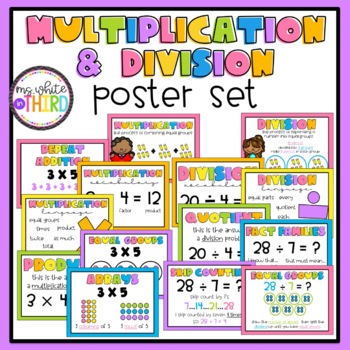Multiplication & Division Strategy Posters
- PDF
Description
Perfect to hang in your classroom and reference all year! Clear and colorful!
7 multiplication posters.
7 division posters.
***************************************************************************
Customer Tips:
How to get TPT credit to use on future purchases:
• Please go to your My Purchases page (you may need to login). Beside each purchase you'll see a Provide Feedback button. Simply click it and you will be taken to a page where you can give a quick rating and leave a short comment for the product. I value your feedback greatly as it helps me determine which products are most valuable for your classroom so I can create more for you. ☺
Be the first to know about my new discounts, freebies and product launches:
• Look for the red star near the top of any page within my store and click it to become a follower. You will now receive customized email updates about this store. ☺




